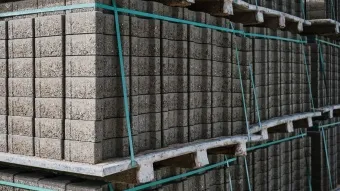This month, Israel's Purchasing Managers' Index (PMI) has changed direction. After four consecutive months of contraction, the index has crossed the 50% line that separates expansion from contraction and has returned to expansion. The value measured this month stands at 51.5%, a significant increase of 5.1% from the previous month's value of 46.4% (seasonally adjusted data).
The index center, Mr. Eli Zimels, notes that this month the production output component also returned to expansion and joined the local demand and employment components, which continue to be in expansion for the third consecutive month. This month, the foreign demand component continues to contract, while the raw material prices component continues to expand. This month, both supply time components continue to contract. In addition, the index center notes that in the US, the index continues to expand for the second consecutive month, while in England, the index continues to contract for the fifth consecutive month.
Production outputs
This month, the production outputs component has changed direction. After two consecutive months of contraction, this component has crossed the 50% line and moved to expansion. The value measured this month stands at 50.3%, an increase of 3.1% from the previous month's value of 47.2%. Survey respondents attribute the change in direction and the transition to expansion in this component to a variety of reasons, the most important of which are the level of demand, seasonality, and efficiency.
New orders from domestic customers
The local orders component continues to expand for the fourth consecutive month, and this month there was even a further intensification in the strength of the expansion. The value measured this month stands at 55.2%, an increase of 3.4% from the previous month's value of 51.8%. Survey respondents attribute the continuation of the expansion in this component to a variety of reasons, the main ones being the level of demand, efficiency, and seasonality.
Purchases for inventory
In the quantity of purchases for inventory component, there was again a change in direction this month. After only one month of contraction, this component returned and crossed the 50% line that separates expansion from contraction and returned to expansion. The value measured this month stands at 58.9%, a drastic and significant increase of 11.7% from the previous month's value of 47.2%. Survey respondents attribute the change in direction and the return to expansion in this component to the level of demand, seasonality, and a change in the inventory policy of the firms.
Prices
The raw material prices component continues to expand for the fifty-fifth consecutive month, and this month there was even a further, albeit minor, intensification in the strength of the expansion. The value measured this month stands at 63.5%, an increase of 0.1% from the previous month's value of 63.4%. The meaning of the price component continuing to expand is that there is a continuation of the increase in raw material prices. The main reasons for the continuation of the expansion in this component are attributed by the survey respondents to the continued rise in raw material prices, a shortage of some raw materials, and changes in exchange rates.
Domestic purchases - supply times
The supply times component in the local market continues to contract for the twentieth consecutive month, although this month there was a further moderation in the strength of the trend in this component. The value measured this month stands at 46.3%, a significant increase of 5.6% from the previous month's value of 40.7%. The meaning of the supply times component being in contraction is that there is an extension in supply times.
Import of raw materials - supply times
The supply times component from abroad continues to contract for the sixty-eighth consecutive month, although this month there was a further moderation in the strength of the contraction. The value measured this month stands at 39.3%, a drastic and significant increase of 12.1% from the previous month's value of 27.2%. The meaning of the foreign supply times component continuing to contract is that the extension in supply times from abroad continues.
Raw material inventory levels
The raw material inventory levels component continues to contract for the third consecutive month, although this month there was a slight moderation in the strength of the contraction. The value measured in this component this month stands at 49.6%, an increase of 2.6% from the previous month's value of 47.0%. Survey respondents attribute the continuation of the contraction in this component to the level of demand and seasonality.
Finished product inventory
The finished product inventory component continues to expand for the third consecutive month, and this month there was even a drastic intensification in the strength of the expansion. The value measured in this component this month stands at 59.9%, an increase of 8.6% from the previous month's value of 51.3%. Survey respondents attribute the continuation of the expansion in this component to the level of demand, the inventory policy of the firms, and seasonality.
Employment level
The employment component continues to expand for the second consecutive month, and this month there was even a slight intensification in the strength of the expansion. The value measured this month stands at 51.4%, an additional increase of 2.7% from the previous month's value of 51.4%. Survey respondents attribute the continuation of the expansion in this component to the increase in the production capacity of the factories, seasonality, and the level of demand.
New orders from customers in the world
The export demand component continues to contract for the sixth consecutive month, although this month there was a further moderation in the strength of the contraction. The value measured this month stands at 47.4%, a slight increase of 3.2% from the previous month's value of 44.2%. Survey respondents attribute the continuation of the contraction in this component to the level of demand from abroad.


 Found it useful? Share
Found it useful? Share
 Share on Facebook
Share on Facebook
 Share on X
Share on X
 Share on LinkedIn
Share on LinkedIn
 Share via Email
Share via Email
 Share on WhatsApp
Share on WhatsApp
 Print Article
Print Article
